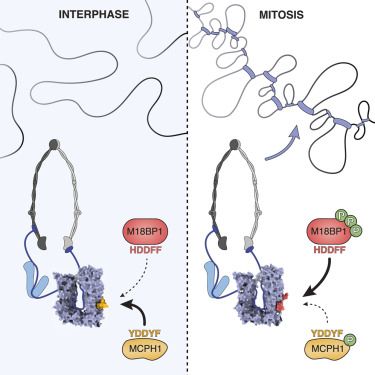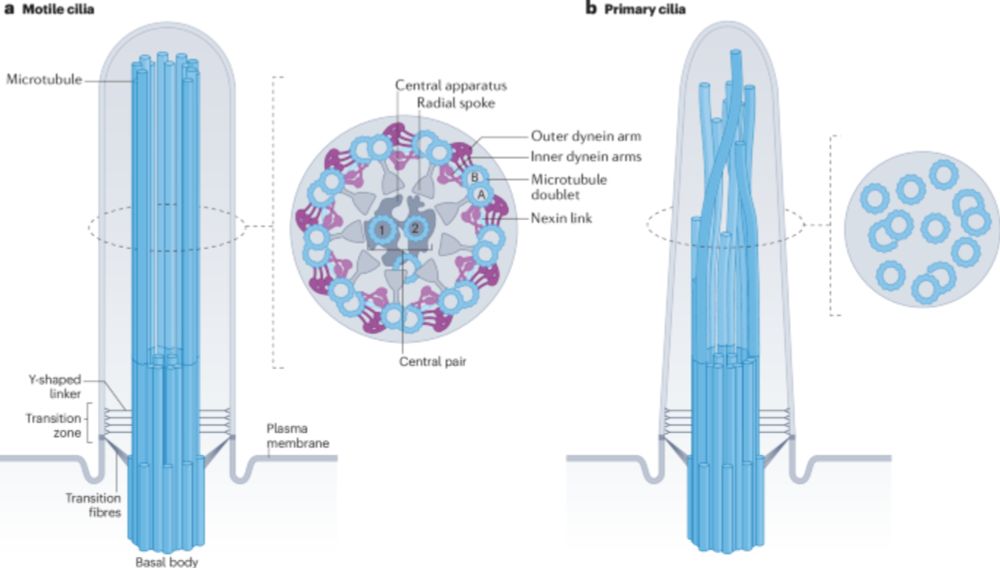Happy to share the inaugural paper from the lab. We describe a molecular mechanism for the activation of outer dynein arm motors that power the vital motion of cilia.
Open access link below:
www.nature.com/articles/s41...
Here's a cool animated summary
29.09.2025 19:09 — 👍 91 🔁 25 💬 8 📌 5
I am excited to share our new preprint on the CAGE complex, a mysterious hollow protein complex that I first saw years ago while surveying Tetrahymena ciliary lysate www.biorxiv.org/content/10.1... #cilia #protistsonsky 🧬🧪
23.09.2025 17:08 — 👍 167 🔁 54 💬 7 📌 13
Excited to see this work published online at @cp-cell.bsky.social today!
www.cell.com/cell/fulltex...
20.08.2025 15:20 — 👍 35 🔁 17 💬 5 📌 2
Thrilled to see our study on how kinesin-2 motors are switched on and off published in @natsmb.nature.com ⚛️
➡️ www.nature.com/articles/s41...
Congrats to all authors from me and Anthony 🎉 @dunnschool.bsky.social Check out this animation made by talented PhD student @matthew-batisio.bsky.social 😆
29.07.2025 09:04 — 👍 63 🔁 26 💬 1 📌 3

A conserved mechanism for the retrieval of polyubiquitinated proteins from cilia
The temporospatial distribution of proteins within cilia is regulated by intraflagellar transport (IFT), wherein molecular trains shuttle between the cell body and cilium. Defects in this process impair various signal-transduction pathways and cause ciliopathies. Although K63-linked ubiquitination appears to trigger protein export from cilia, the mechanisms coupling polyubiquitinated proteins to IFT remain unclear. Using a multidisciplinary approach, we demonstrate that a complex of CFAP36, a conserved ciliary protein of previously unknown function, and ARL3, a GTPase involved in ciliary import, binds polyubiquitinated proteins and links them to retrograde IFT trains. CFAP36 uses a coincidence detection mechanism to simultaneously bind two IFT subunits accessible only in retrograde trains. Depleting CFAP36 accumulates K63-linked ubiquitin in cilia and disrupts Hedgehog signaling, a pathway reliant on the retrieval of ubiquitinated receptors. These findings advance our understanding of ubiquitin-mediated protein transport and ciliary homeostasis, and demonstrate how structural changes in IFT trains achieve cargo selectivity. ### Competing Interest Statement The authors have declared no competing interest. Sara Elizabeth O'Brien Trust Postdoctoral Fellowship awarded through the Charles A. King Trust Postdoctoral Research Fellowship Program, , 8460873-01 Richard and Susan Smith Family Foundation, https://ror.org/05j95n956, National Institute of General Medical Sciences (NIGMS), , R01GM141109, R01GM143183
How do cells keep their cilia “clean” and functional? Our new study uncovers a conserved mechanism for retrieving polyubiquitinated proteins from #cilia – a process essential for cellular signaling and health. #cellbiology #ciliopathy #ubiquitin #IFT 🧵👇 1/n
29.04.2025 15:04 — 👍 52 🔁 26 💬 2 📌 2
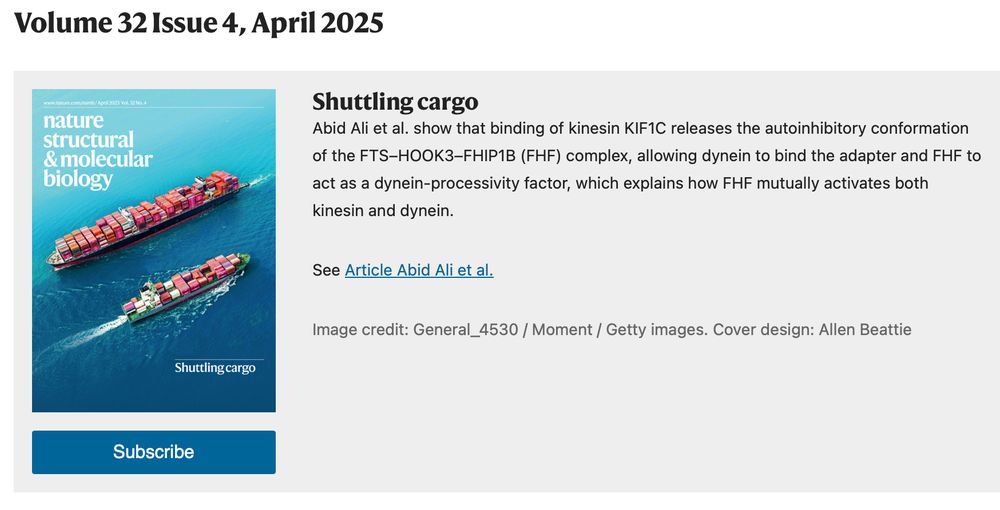
Great to see our story on dynein & kinesin co-dependence published www.nature.com/articles/s41..., and absolutely chuffed that it's made the front cover (thanks NSMB!). A brilliant News & Views too by Steven Markus www.nature.com/articles/s41.... Collab between @carter-lab.bsky.social & Straube lab🔬
24.04.2025 10:17 — 👍 26 🔁 8 💬 1 📌 1
Excited to share our preprint on the molecular architecture of heterochromatin in human cells 🧬🔬w/ @jpkreysing.bsky.social, @johannesbetz.bsky.social,
@marinalusic.bsky.social, Turoňová lab, @hummerlab.bsky.social @becklab.bsky.social @mpibp.bsky.social
🔗 Preprint here tinyurl.com/3a74uanv
11.04.2025 08:35 — 👍 360 🔁 142 💬 12 📌 20
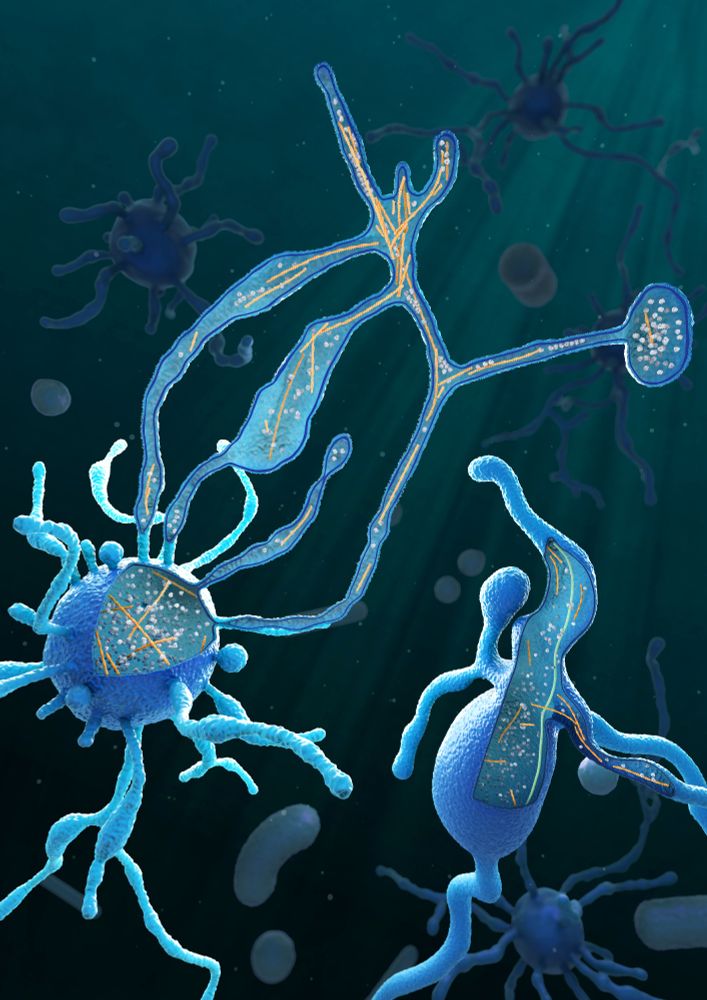
Credit: Margot Riggi (@margotriggi.bsky.social), Max-Planck Institute of Biochemistry (@mpibiochem.bsky.social)
Asgard archaea have actin - but what about microtubules? Where do they come from? 🧐 Our new paper www.cell.com/cell/fulltex... by @xujwet.bsky.social & @florianwollweber.bsky.social, in collaboration with the Schleper & Wieczorek labs, describes tiny Asgard microtubules! #TeamTomo #ArchaeaSky 1/6
21.03.2025 15:16 — 👍 254 🔁 109 💬 7 📌 15
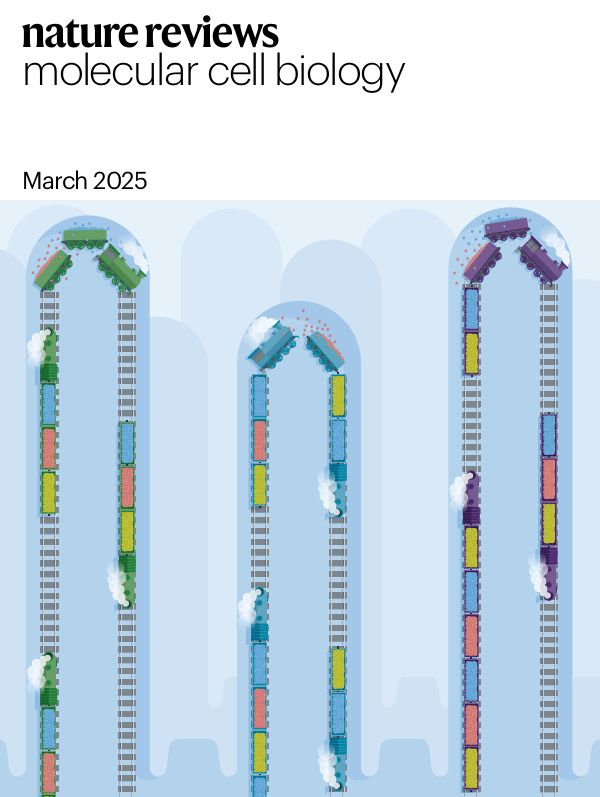
Our MARCH Issue is now live! 🥳
Find the link to the full issue here:
🔗 go.nature.com/41gd09d
The cover is inspired by this great article on intraflagellar transport by @gaiapigino.bsky.social and @samlacey.bsky.social
👉 go.nature.com/41fEig5
#CellBio #cilia
25.02.2025 10:14 — 👍 11 🔁 6 💬 1 📌 1
“Join the Pigino Lab! We’re hiring a PhD student to explore primary cilia biology using advanced imaging, spatial ‘omics, and AI. Apply now at www.cilia-ai.eu and be part of the Cilia-AI Doctoral Network!”
19.02.2025 20:41 — 👍 29 🔁 28 💬 0 📌 1
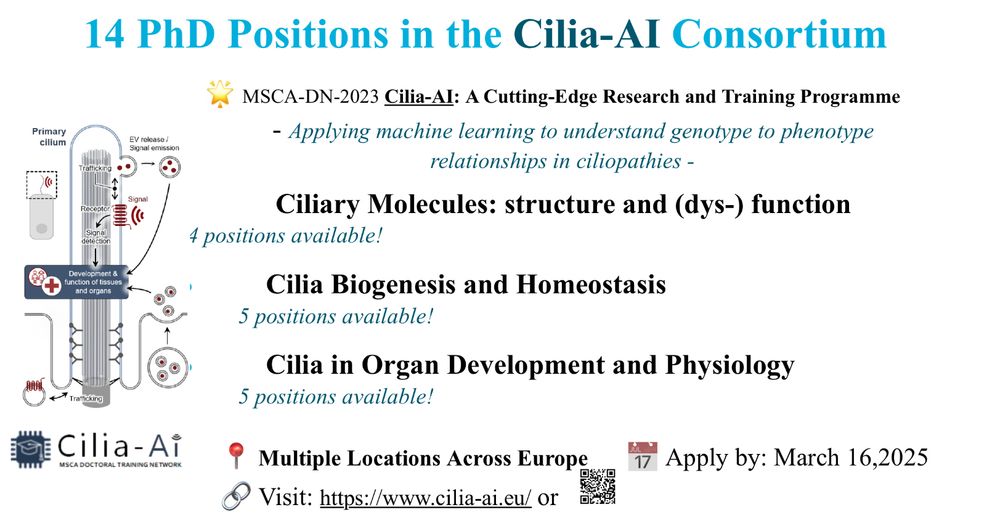
👀 Looking for a PhD position but you are torn between cilia biology and computational AI research? 😜
The Cilia-AI Doctoral Network has you covered! Lots of fantastic projects throughout Europe, also @humantechnopole.bsky.social with us or @gaiapigino.bsky.social - apply now! ‼️
www.cilia-ai.eu
14.01.2025 18:30 — 👍 32 🔁 16 💬 0 📌 1
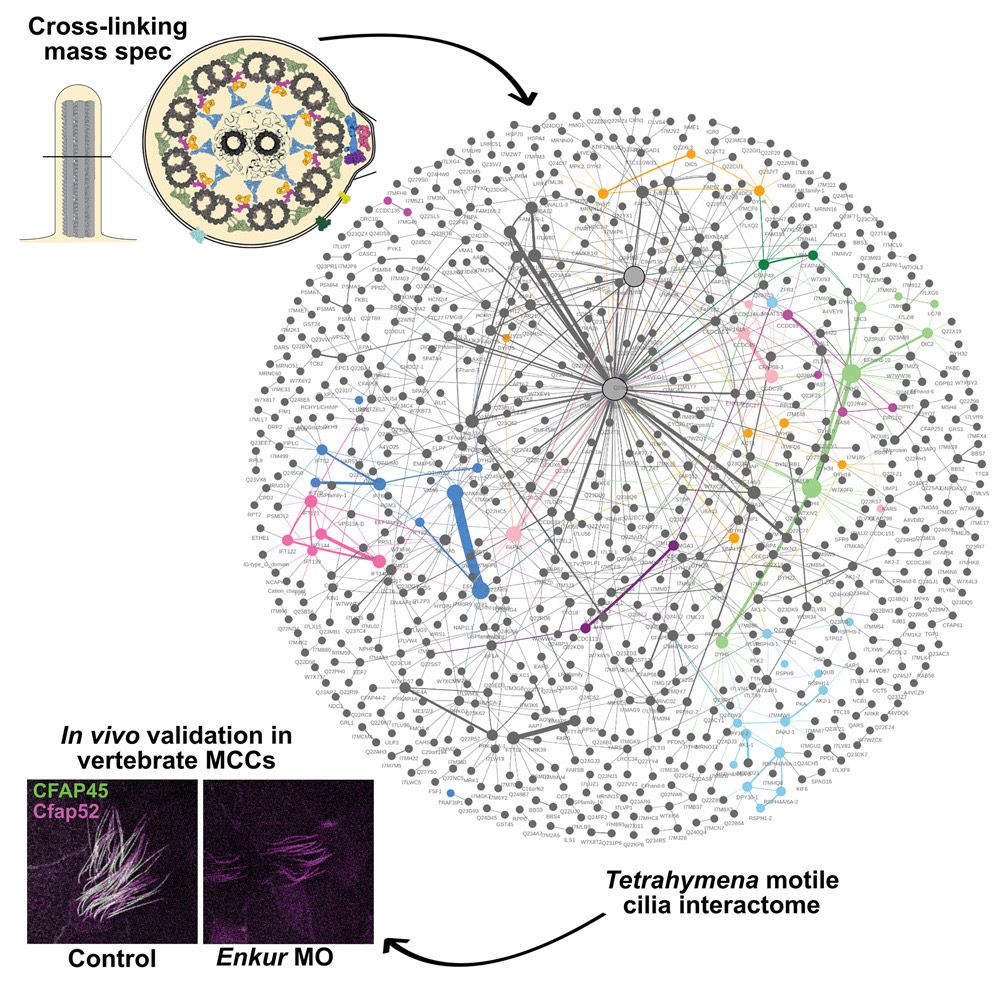
I am excited to share some of my PhD work on the motile cilia interactome revealed by XL/MS with @jbwallingford.bsky.social @edwardmarcotte.bsky.social Ophelia Papoulas, Chanjae Lee, David Taylor, and @builab.bsky.social www.cell.com/developmenta...
16.12.2024 14:44 — 👍 67 🔁 18 💬 4 📌 5
Our #CryoET paper on ciliary rootlet ultrastructure from mouse retina is now out in @elife.bsky.social! Have a peek with this video or dive deeper at bit.ly/3ZJzhgc. Big thanks to @carter-lab.bsky.social and #teamtomo.
#CryoET #CryoEM #Cilia #Rootlet #Centriole #Research #Science
08.12.2024 14:38 — 👍 100 🔁 34 💬 3 📌 3
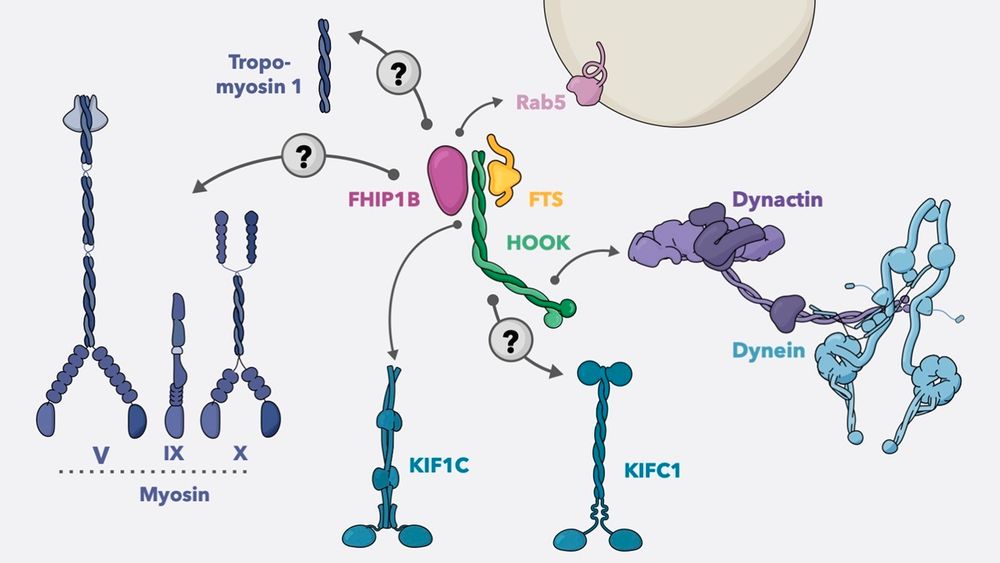
This scheme shows the cargo adaptor FHF in the middle with arrows pointing to distinct microtubule and actin-based motors (dynein-dynactin, KIFC1, KIF1C and myosins V, IX and X as well as Tropomyosin 1). It also shows a link to Rab5 marked early endosomes. The hypothesis is that FHF coordinates multi motor binding at the early stages of endocytosis. The PhD project would address the hierarchy of motor binding and how these motors coordinate to allow the newly formed vesicle to transition from the actin to MT cytoskeletal network.
If you’re interested in how molecular motors coordinate to power intracellular trafficking events (e.g. endocytosis), I’ve got a PhD position available to study this at vibrant Bristol uni. In this project, we will capture highly dynamic events by #cryoEM, single molecule imaging & cell biology. 🔬❄️🧪
27.11.2024 12:15 — 👍 53 🔁 30 💬 1 📌 7
Thanks to @lisaheinke.bsky.social for guiding us through the process with lots of helpful feedback.
18.11.2024 11:07 — 👍 3 🔁 0 💬 0 📌 0
Group leader in the Faculty of Biological Sciences, University of Leeds, structural biologist, study DNA damage response and repair, views are my own.
Staff Scientist at Human Technopole 🇮🇹. Working mostly on RNA polymerases using CryoEM and biophysics!
Staff scientist @biozentrum.unibas.ch using algorithms to look at tiny stuff inside cells, or #cryoET if you prefer. Here I talk mostly about my research. Views my own. 🇧🇷 in 🇨🇭
Molecular animation at MPI for Biochemistry, Germany
Journalist. Editor of @londoncentric.media, a modern news outlet covering London in the old-fashioned way: www.londoncentric.media
We're the Crick, a biomedical research lab in London working to figure out how life works.
Home to more than 2,000 scientists and a free public exhibition space.
https://www.crick.ac.uk/
Research group at KCL using cryo-EM and cryo-ET to investigate all things around the cytoskeleton and associated proteins
CryoEM, membrane proteins and whatnot
Political Editor, The Guardian
https://www.theguardian.com/profile/pippacrerar
How do 'all cells come from cells'?
Imaging Asgard archaea and other strange organisms
@pilhoferlab.bsky.social and soon @embl.org Grenoble | 🦠❄️🔬#teamtomo
embl.org/wollweber
We study lamins and nuclear mechanobiology. Meinig School of Biomedical Engineering. Weill Institute for Cell and Molecular Biology. Cornell University. https://lammerding.wicmb.cornell.edu/
tries to make microscopes smarter · bioimage analysis, optogenetics, ml, 3d printing, open science · phd student in cellular signalling dynamics @PertzLab
Computational Cryo-EM/ET at Genentech
Love people, the outdoors and building stuff
Complexity is the enemy
All opinions my own
A multidisciplinary team of investigators at Washington University in St Louis that perform fundamental, translational, and clinical research on human ciliopathies.
Biochemist studying #Cilia, Cell Signaling and Protein Trafficking via Proximity Labeling and Proteomics.
https://www.mick-lab.com
CryoEM specialist at Human Technopole
Oh god not again (📺🎬: ITG, 📚: Curtis Brown)
I write words good (journalist, author, radio person, etc) marie.s.leconte@gmail.com



